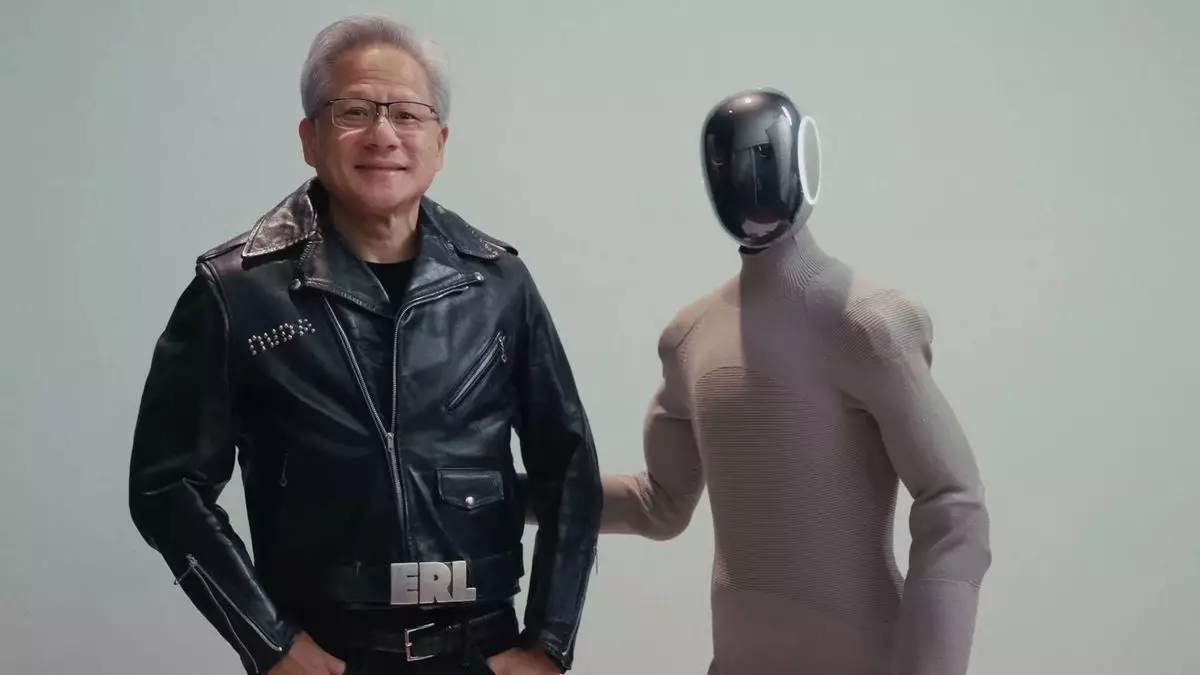In an unexpected yet captivating turn of events, a recent collaboration between 1X Technologies, an innovative humanoid robotics company, and Nvidia’s Gear Lab presented the Neo Gamma humanoid robot sporting a striking studded leather jacket—designed by the California clothing brand ERL. This eye-catching piece, emblazoned with Nvidia’s logo, showcased a unique blend of high-tech innovation and contemporary fashion. However, beyond this sartorial spectacle lies a more profound ambition: to integrate advanced humanoid robots into everyday life.
Founded in Norway as Halodi Robotics, 1X Technologies has rebranded and expanded its focus, aiming to marry robotics with our domestic routines. By channeling resources towards creating humanoid robots capable of performing household chores, they are not merely envisioning the future; they are actively forging it. Their partnership with Nvidia highlights a pivotal moment in technology, wherein developers are striving to share expertise, ultimately accelerating the deployment of efficient home helpers.
Holistic Partnerships: The Key to Accelerating Progress
The collaboration signifies more than just a melding of corporate interests; it embodies a holistic approach to problem-solving. Eric Jang, the VP of AI at 1X Technologies, emphasized the shared goal of crafting general-purpose humanoid robots that reshape our living environments. By merging the intellectual abilities of two tech giants, the journey toward a futuristic household embraces collaboration as its heartbeat, positioning 1X and Nvidia as trailblazers of technological progress.
The recent demonstration during Nvidia CEO Jensen Huang’s GTC 2025 Keynote further reinforced this shared commitment. In an audacious display, Neo Gamma showcased its autonomy by successfully completing a household task—loading a dishwasher. This feat not only illustrated the potential for domestic versatility in humanoid robots but also laid the groundwork for a future in which such technologies seamlessly integrate into our daily lives.
The Intricacies of Autonomous Learning
Digging deeper into the mechanics behind this collaboration reveals a remarkable infrastructure designed to facilitate the robot’s autonomous learning. 1X Technologies developed a dataset API that allows Nvidia to tap into data amassed from employee houses and office environments. This fusion of data-driven insights and machine learning offers a window into how Robo-assistants can, with time, evolve into competent partners in domestic settings.
What’s truly compelling is the technical prowess involved in Neo Gamma’s operation. Utilizing an onboard Nvidia GPU or an offboard counterpart, it executes a continuous vision-action loop, allowing it to respond promptly to its surroundings. Focusing on simple yet illustrative moves, such as grasping a cup and placing it into a dishwasher, the Neo Gamma’s practice sessions highlight the painstaking task required for precision robotics.
While watching the robot’s deliberate movements is undoubtedly exciting, there lingers a sense of skepticism surrounding its capabilities. The promotional materials might showcase the robot engaging in an array of household chores like vacuuming, yet a critical eye reveals that such portrayals may be more aspirational than accurate. The underlying truth is that the Neo Gamma is still in training, and the road to fully autonomous domestic help is filled with challenges to surmount.
The Reality Check: Progress with Limitations
Despite the excitement surrounding humanoid robotics and their potential, it’s essential to approach these developments with realistic expectations. The aforementioned promotional video inadvertently unveils a raw depiction of the robot’s current abilities—struggling to accurately fulfill tasks while its operators physically assist it. This candid portrayal challenges the often glossy marketing narratives that veer into unrealistic expectations.
As discussions around humanoid robots proliferate—from robotic bartenders to AI-powered companions—it begs the question: Are we rushing to embrace a future that isn’t quite ready? Enthusiasts crank up the hype, attempting to “make humanoid robots happen,” but the truth is that, as of now, these constructs are still grappling with the foundations of function.
1X Technologies and Nvidia’s partnership undoubtedly signifies a step forward, yet many hours of training, calibration, and fine-tuning remain before the Neo Gamma can confidently navigate the nuanced landscape of household tasks.
In an age rife with technological innovation, where the ambition is palpable, it might take more than high-profile collaborations and ambitious marketing campaigns to see humanoid robots effectively assimilate into our lives. The journey is fraught with both promise and real-world challenges that must not be overlooked as we tread cautiously into this brave new world.


Leave a Reply